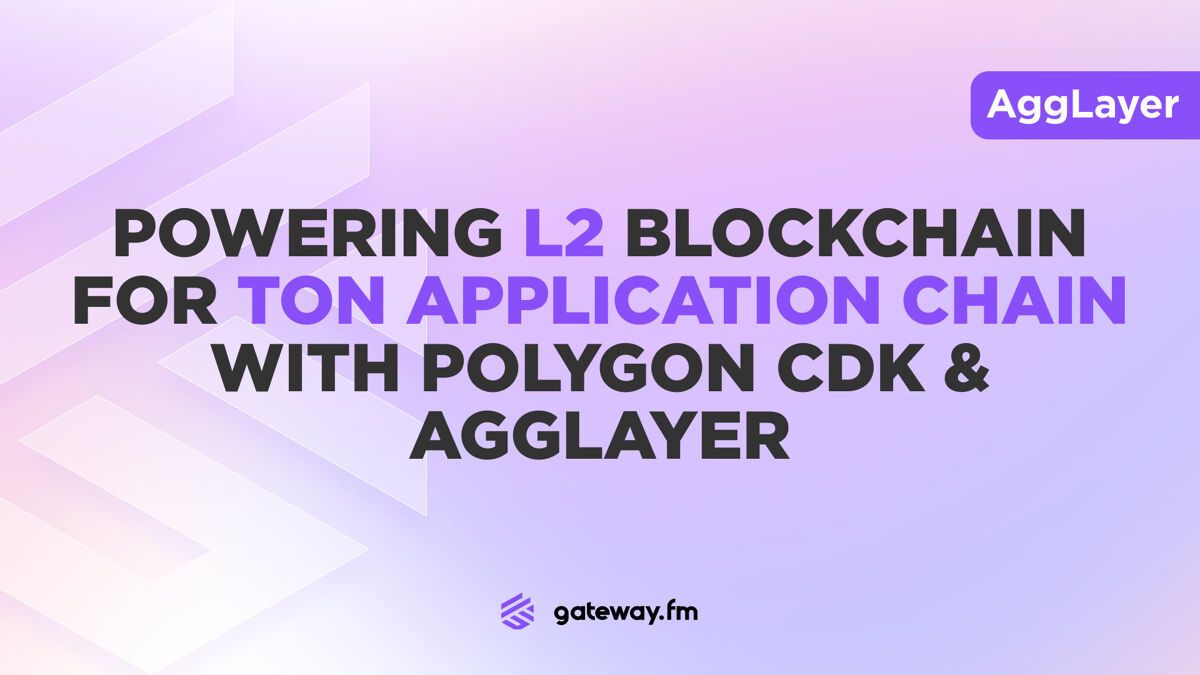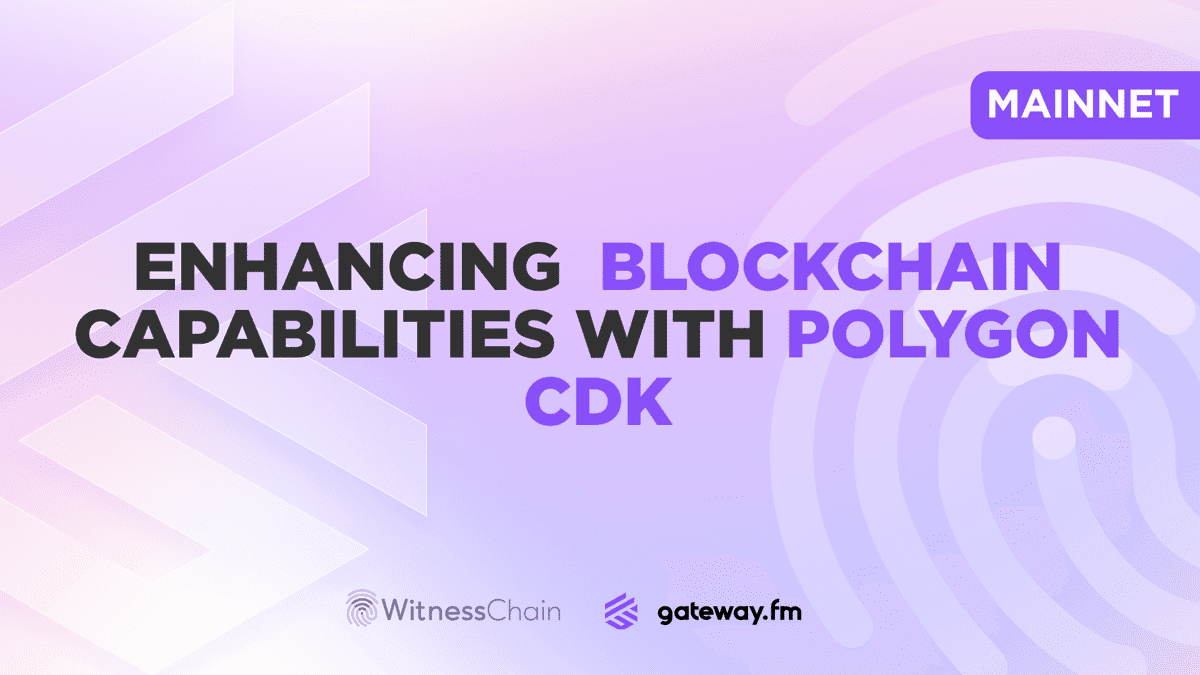
What is RaaS? Rollup-as-a-Service
14 July 2024Rollup-as-a-Service (RaaS) offers a streamlined approach to deploying scalable solutions that address the limitations of L1 (Layer 1) blockchains like Ethereum. Ethereum, one of the most popular and widely used blockchain platforms, faces scalability and transaction cost challenges. To address these issues, the blockchain community has developed several L2 (Layer 2) scaling solutions designed to enhance the throughput and efficiency of blockchain networks without compromising security and decentralization.
Among solutions like state channels, side chains, plasma, and validium, rollups have emerged as a key technology, enabling the processing of transactions off the main blockchain (L1). Building on the concept of rollups, Rollup-as-a-Service (RaaS) takes this technology a step further by offering a platform that simplifies the deployment and management of rollup solutions, providing developers and enterprises with the necessary tools and infrastructure to leverage the benefits of rollups without the complexities of setting up and maintaining them.
Let’s dive deeper into exploring the mechanics of rollups, understanding the benefits Rollups-as-a-service (Raas) platforms offer, and how to get started creating your rollup with Presto.
What are Blockchain Rollups?
To understand Rollup-as-a-Service (Raas), it's essential to grasp the mechanics of rollups. Rollups solve the scalability issues plaguing many blockchain networks. They do this by processing transactions off the main chain (L1) and then bundling or rolling up these transactions into a single batch. This batch is then committed to the main chain, reducing the amount of data processed and stored on the L1 blockchain. Here’s a step-by-step breakdown of how rollups work:
1. Batching Transactions
Rollups bundle or roll up multiple transactions into a single batch. Instead of processing each transaction individually on the L1 chain, they are aggregated into a single transaction, significantly reducing the amount of data that needs to be stored on-chain.
2. Off-Chain Processing
The actual computation and transaction processing occurs on L2, where rollups handle the execution of smart contracts, transaction verification, and other operations on a separate layer. This offloads a significant amount of work from the main chain.
3. State Root Commitment
After processing, rollups submit a state root or a cryptographic hash that represents the new state of the chain after all the batched transactions have been executed. This state root is submitted to the L1 blockchain, allowing it to be securely referenced and verified.
4. Security and Data Availability
Despite processing transactions off-chain, rollups ensure data availability and security by posting transaction data or proofs back to the L1 chain. There are two main types of rollups based on how they handle this:
- Optimistic Rollups: They assume transactions are valid and only run a fraud-proof if someone challenges the validity of a transaction. This approach is called "optimistic" because it optimistically assumes that transactions are correct.
- ZK-Rollups (Zero-Knowledge Rollups): They generate a cryptographic proof, known as a zero-knowledge proof, for every batch of transactions. This proof is then verified by the L1 blockchain, ensuring that all transactions are valid. This method is more computationally intensive but provides instant finality and stronger security guarantees.
5. Fraud Proofs and Validity Proofs
- Fraud Proofs (Optimistic Rollups): If someone detects an invalid transaction in an optimistic rollup, they can submit a fraud proof. The L1 chain then verifies the proof, and if it finds the transaction to be indeed fraudulent, it rolls back the invalid transaction.
- Validity Proofs (ZK-Rollups): These are generated for every batch and ensure that all transactions in the batch are valid. The L1 chain only needs to verify the proof, not each individual transaction, which is computationally efficient and secure.
6. Finality on the main chain
Once the state root or proof is verified on the Layer 1 chain, the batched transactions are considered final. This action finalizes the state transitions and updates resulting from the processed transactions, effectively incorporating them into the immutable blockchain ledger.
Understanding Rollup-as-a-Service (RaaS) and the Benefits
We've established how rollups work to offer a solution for scaling blockchains by processing transactions off-chain and then settling them on the main chain. However, building a custom rollup from scratch requires a deep understanding of the underlying technology and significant development resources. Rollup-as-a-Service (RaaS) platforms act as an abstraction layer, hiding the complexities of rollup development and allowing developers to focus on building their dApps.
Simplified Deployment
One of the primary advantages of Rollup-as-a-Service (RaaS) platforms is their ability to streamline the deployment and management of rollups. Similar to software-as-a-service (SaaS) models, RaaS platforms abstract the complexities of infrastructure setup and maintenance, allowing developers to focus more on application development and less on managing nodes or maintaining code. By providing intuitive SDKs and dashboards, RaaS empowers developers to launch application-specific rollups efficiently without the need for deep blockchain expertise.
Customization
Rollup-as-a-Service (RaaS) platforms empower developers with flexibility and customization options to tailor rollup solutions to specific application requirements. Whether deploying public or private rollups, integrating block explorers, wallets, analytics, and oracles, or incorporating other third-party tooling, developers have the freedom to configure and optimize their blockchain solutions without being constrained by infrastructure limitations. Gateway’s Rollup-as-a-Service (RaaS) platform offers over 35 customizations options to tailor your rollup.
Faster Time-to-Market
With Rollup-as-a-Service (RaaS), developers can deploy their dApps on custom rollup chains with just a few clicks. This streamlined deployment process reduces the time and resources required compared to building rollups from scratch, enabling developers to seize emerging market opportunities and enhancing their competitive edge in the market.
Cost Efficiency
Building and maintaining rollup infrastructure can be expensive. Rollup-as-a-Service (RaaS) providers handle the infrastructure management, security maintenance, and ongoing operational support. This allows developers to focus on building their applications without worrying about the underlying infrastructure.
Presto: Gateway.fm's Rollups as a Service (RaaS) Platform
Gateway.fm’s Rollup-as-a-Service (RaaS) platform, Presto, eliminates the complexities of launching custom rollup chains by offering a low-code deployment environment compatible with leading rollup frameworks, including Polygon CDK, zkSync, Arbitrum, and OP Stack.
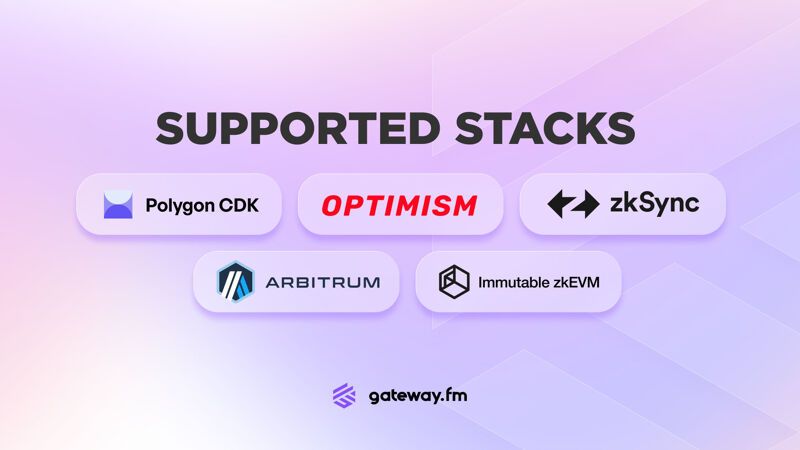
By utilizing Presto, developers gain access to a wide range of tools and functionalities that significantly streamline the deployment process, including block explorers, faucets, bridges, oracles, data indexers, data availability options, RPCs, and over 35 additional integrations. Presto ensures the highest levels of reliability and performance for your rollup chains with real-time monitoring, guaranteeing 99.9% uptime and excellent network performance, backed by enterprise-level Service Level Agreements (SLAs).
Presto empowers organizations like Wirex, Lumia, Humanity Protocol, Witness Chain, TAC, GPT Protocol, and Palm Network with a cutting-edge platform to enhance their blockchain solutions, ensuring scalability, security, and efficiency with all the tools and support needed.
Deploying a Rollup with Presto
Starting to create a rollup using Presto is straightforward and efficient, empowering developers to harness the benefits of enhanced scalability. Here’s how you can get your rollup up and running:
1. Sign in to Presto
Access presto.gateway.fm using your Google account credentials. After signing in, navigate to the upper right corner and click on '+ Deploy'.
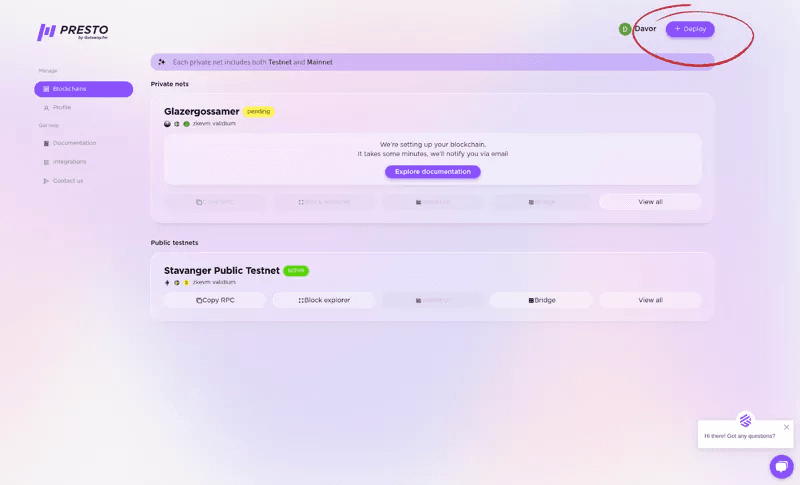
2. Configure Deployment
Choose your deployment preferences to customize your rollup, including selecting your preferred rollup stack, root chain, data availability options, RPC, expected transactions, and over 35 additional integrations.
3. Monitor Deployment
Within a few minutes, monitor the status of your deployment until it transitions to 'Active', indicating your rollup is live.
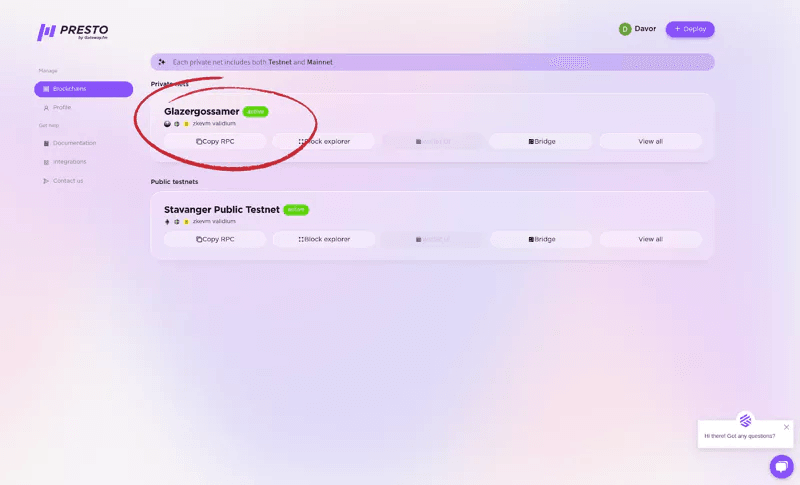
4. Manage Your Rollup
Your rollup is now ready to enhance scalability and streamline transactions on the chosen blockchain network. Use the menu to access detailed settings and an overview of your deployed rollup, empowering you with immediate control.
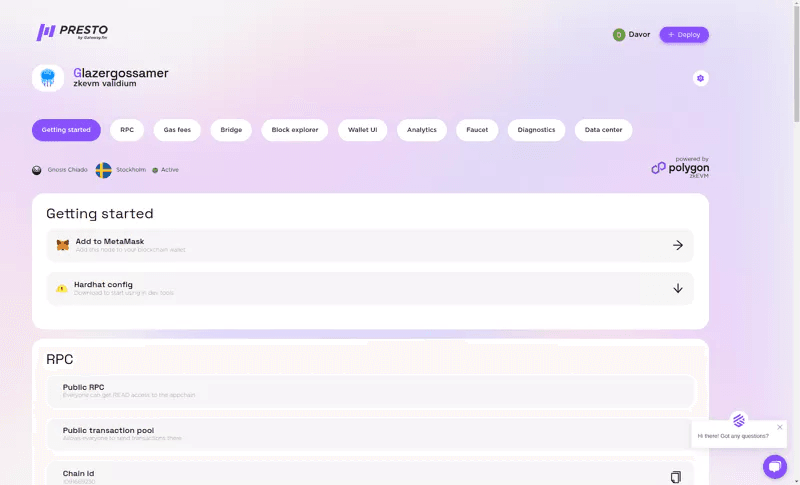
Conclusion
Launching your L2 or L3 rollup chain with Gateway.fm's Rollup-as-a-Service (RaaS) platform, Presto, offers a strategic advantage in scaling your blockchain applications. By simplifying deployment, enhancing scalability, and ensuring cost efficiency, Presto empowers developers to unlock the full potential of decentralized technologies. Whether you're a startup innovating in the blockchain space or an established enterprise seeking to optimize transaction throughput, Presto provides the tools and support needed to thrive in the decentralized future.
Other blog posts
Want to read more? Discover our other articles below!


